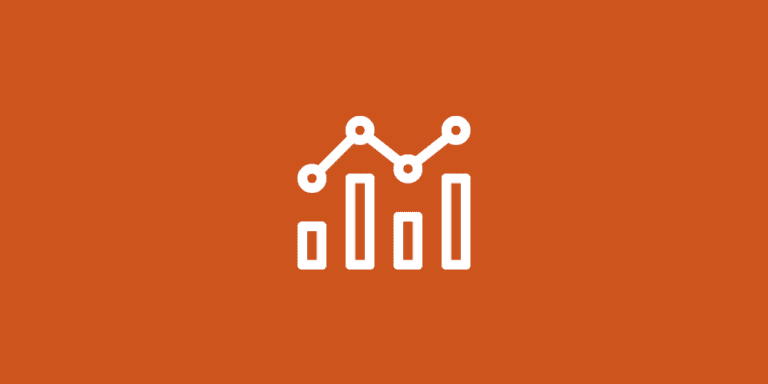The Cost of Asana in 2024: Grasp Their Plans Hidden Expenses!

Navigating the cost of Asana for your team in 2024 means dissecting both visible and obscured expenses across different plans. This piece zeroes in on the granular details—what you’ll pay, from the Basic plan at no cost to the Enterprise plan’s custom rates and the intricacies of monthly versus annual subscriptions. We’ll also touch on those less-obvious fees that lurk beneath the surface, ensuring you have a complete financial picture before you commit to Asana.
Key Takeaways
- Asana offers four pricing tiers – Personal, Starter, Advanced, Enterprise, and Enterprise+ – each designed for different team sizes. She offers escalating features, such as advanced workflow automation and security for the top tiers.
- Annual billing on Asana is more cost-effective than monthly billing, potentially saving users around 18-23% on their chosen plans.
- While Asana’s paid plans are feature-rich, the free Basic plan offers ample value for small teams with unlimited tasks, projects, and storage; plus, there’s a range of add-ons and extras for integration with external services, though some may incur additional costs.
Asana 2024 Pricing
Personal
$0 / yearly
free forever
Starter
$10.99 / yearly
$13.49 billed monthly
Advanced
$24.99 / yearly
$30.49 billed monthly
Exploring Asana’s Pricing Tiers: From Free to Enterprise

Asana, a popular project management platform, offers four pricing tiers, also known as basic premium business enterprise options:
- Basic
- Premium
- Business
- Enterprise
Each tier is designed with a specific user base, offering a spectrum of features from essential task management to advanced workflow automation and security features.
Next, we’ll delve into the specifics of each plan, identifying their target users and the features they provide. But remember, it’s not just about how much Asana costs but also about the value it brings to your team.
1. The No-Cost Starter: Asana Basic
As suggested by its name, Asana Basic serves as an entry point. It’s a robust free plan to facilitate task management for individuals and small teams. With support for up to 15 team members, it’s an excellent option for smaller collaborative efforts.
The Asana Basic plan offers over 100 free integrations and allows using time-tracking apps through these integrations. However, limitations exist, such as the absence of a timeline view and advanced search. These limitations might prompt users to move to a paid Asana plan for more functionality.
2. Enhanced Control: Asana Premium
Asana Premium is a step from the Basic plan, a choice for teams desiring greater control and collaboration. With the various Asana pricing plans available, the Premium plan, at $10.99 per user per month, provides features like Workflow Builder and custom fields that enable better coordination and streamlining of tasks across teams.
Beyond task management, Asana Premium offers robust analytics with custom real-time project dashboards and advanced search functionality. These features allow you to monitor project progress and gather key metrics for efficient planning and decision-making.
3. Optimize Team Workflow: Asana Business Plan
Asana’s Business plan, priced at $24.99 per user per month (billed annually), might appeal to companies aiming to enhance team workflow with sophisticated project management tools. This plan includes features like ‘Goals’ to connect work with its purpose and ‘Portfolios’ for real-time project overviews.
In addition, the Enterprise Plan promotes workflow optimization through an increased volume of ‘Automation’ per month and customizable ‘Rules.’ These features, including ‘Formulas’ for in-app calculations and data export capabilities, streamline processes and make managing complex projects more efficient.
4. Tailored Solutions: Asana Enterprise Pricing
Catering to the needs of large organizations that require advanced integrations, custom branding, and high-level security features, Asana Enterprise stands as the top-tier pricing plan. It includes unlimited views, workflow bundles, and advanced integrations with Salesforce, Tableau, and Power BI, among other tools.
Asana Enterprise offers the following features and benefits:
- Custom pricing model based on the individual needs and size of the organization
- Dedicated 24/7 priority support
- Tailored experience that aligns with specific goals and requirements of large clients
The True Value Behind Asana’s Cost
Beyond providing advanced features, Asana’s paid plans also deliver significant value to businesses. Plans like Asana Premium and Business provide:
- Unlimited tasks
- Unlimited projects
- Unlimited collaborators
- Custom fields
- Advanced Reporting
These features help create a more organized, streamlined, and effective project management system.
For larger teams requiring more advanced features, Asana Enterprise users enjoy exclusive features like advanced search, reporting, and locked fields. While these features come at a higher cost, they contribute to a comprehensive project management experience that can significantly enhance productivity and efficiency.
Comparing Monthly and Annual Billing

An important consideration while assessing Asana’s pricing is the billing cycle. Asana offers both monthly and annual billing options. However, opting for yearly billing can result in significant cost savings.
For example, the Asana Premium plan costs $24.99 per person per month with annual billing, which decreases from $30.49 when billed monthly. Similarly, teams can save 23% on the Asana Premium plan and 18% on the Asana Business plan by switching from monthly to annual billing.
Asana’s Hidden Gems: Free Features Worth Noting
Despite the advanced features offered by Asana’s paid plans, the free Basic plan has merits. It includes hidden gems like multi-home tasks, unlimited file storage, and project templates that provide significant value to small teams.
For example, with the free plan, you can:
- Create and manage an unlimited number of tasks and projects
- Utilize multi-select and bulk actions for efficiency
- Keep track of changes with an unlimited activity log
- Invite unlimited free guests to collaborate on your projects
These features and extensive customer service options make Asana Basic a valuable option for teams starting with project management.
Decoding Asana’s Add-Ons and Extras

The capabilities of Asana can be augmented with the help of add-ons and extras, including powerful integrations with external services like Jira Cloud, Salesforce, and Adobe Creative Cloud. Users can also access advanced data visualization tools such as custom chart builder and proofing features.
However, it’s worth noting that these add-ons and extras may incur additional costs. For example, while time-tracking is technically available through integrations on Asana’s free plan, some time-tracking apps in the Asana marketplace may require a paid plan. So, it’s essential to consider these potential hidden costs when evaluating Asana’s pricing.
How Asana Stacks Up Against Competitors
Other project management software platforms for handling multiple projects, such as:
Pose significant competition to Asana. These alternatives offer different pricing plans and features, making it essential to compare and choose the best fit for your team.
For example, Trello costs $5 per user per month for its Standard plan, making it a cheaper option than Asana’s Starter plan, which starts at $10.99 per user per month. However, Trello relies on third-party integrations for features that Asana offers natively, such as:
- milestones
- dependencies
- subtasks
- custom fields
Making the Most of Asana for Your Team

Leveraging Asana’s shared workspaces, tools, and integrations can facilitate constant communication, enhance collaboration, and aid in the effective achievement of objectives for your team. For example, in one of my previous teams, we used Asana to maintain a unified view of work across different projects. This helped us stay on top of our tasks and deadlines, improving productivity.
By visualizing work in real time and clarifying goals using Asana’s work management features, teams can ensure alignment and facilitate the achievement of objectives. Moreover, integrations like Google Docs can streamline collaboration, while features like the Workload tool can help balance staff workloads and aid in staffing decisions.
Tips for Choosing the Right Asana Plan for You
Selecting the appropriate Asana plan requires an assessment beyond just the price. It’s about considering the size of your team, the nature of your projects, and your specific needs. For example, the Basic plan might suffice if you’re a small team with simple projects. However, a paid plan like Premium or Business could be more suitable for managing multiple complex projects.
Moreover, choosing a plan that provides the flexibility to adjust the project scope, budget, or timeline without compromising the overall quality is essential. When I was managing a large project with shifting requirements, Asana’s flexibility proved invaluable in keeping everything on track.
Summary
In sum, understanding Asana’s pricing plans, from Basic to Enterprise, can empower you to choose the right plan for your team and get the most value from this powerful project management tool. Whether you’re a small team just starting out or a large organization with complex projects, there’s an Asana plan that can cater to your needs. Remember, it’s not just about how much Asana costs but about the value it brings to your team.
Frequently Asked Questions
Does Asana cost money?
Yes, Asana offers paid plans starting at $10.99 per user per month when billed annually, with additional features for more complex projects and workflows.
Is paid Asana worth it?
Yes, Asana is worth it for managing complex projects, especially for teams that value collaboration and flexibility. Its user-friendly interface, customization options, real-time collaboration, and automation make it a powerful asset.
Is Asana free anymore?
Yes, Asana’s Basic plan is still free, and it offers unlimited project and task creation, making it an excellent choice for managing tasks and projects effectively.
What is the difference between Asana basic and premium?
The main differences between Asana’s Basic and Premium plans are the user limit, task management features, advanced analytics, security, and project capabilities. The Basic plan is limited to 15 users and has fewer features, while the Premium plan offers unlimited users and a more comprehensive range of advanced tools and functionality.
What features does the Asana Basic plan offer?
The Asana Basic plan offers essential features such as list, board, and calendar views, basic search filters, and over 100 integrations. Still, it does not include the timeline view or advanced search.


